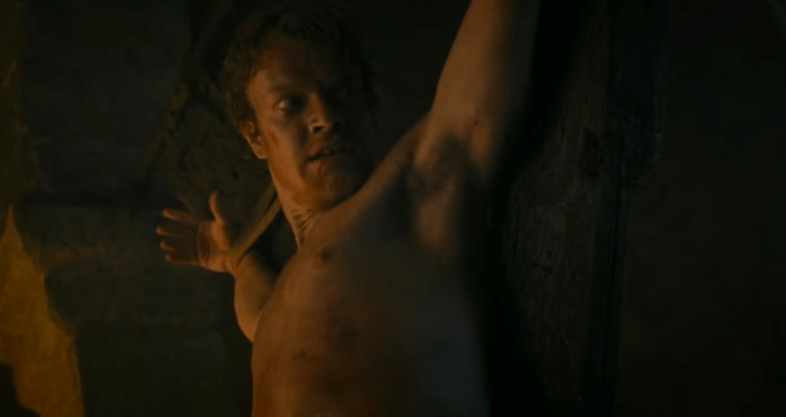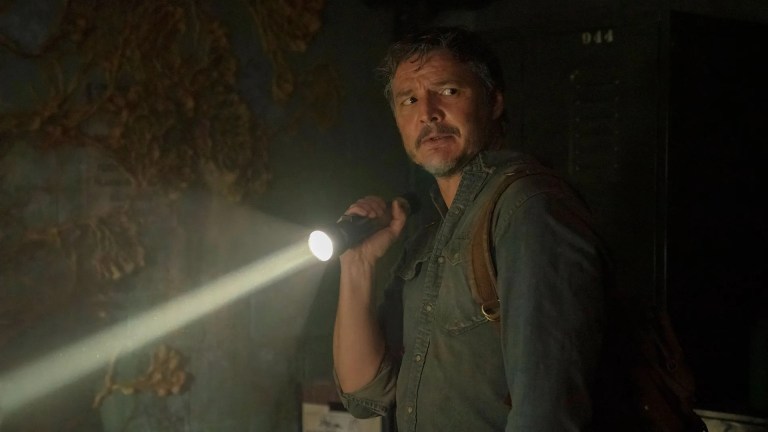The Problem With Gore, Violence, And Blood In Contemporary Media
Why the popularity of bleak and violent shows like Game of Thrones, The Walking Dead and Breaking Bad says something very troubling about Generation Y.
By James Swift


Over the course of 58 minutes, I watched a man have his eyes gouged out, children mercilessly flogged, throats slit en masse and a woman walk totally nude down a city street, while villagers decried her as a “whore” and a “cunt.” This, awash in a sea of exposed male genitals, literally dozens of instances of individuals having their internal organs skewered by sharp metal and multiple scenes overlooking snowy battlefields, where hundreds of nameless, faceless corpses freeze in their own plasma.
The amount of death, destruction and mayhem I witnessed in less than an hour would have easily garnered a NC-17 rating had it come before the Motion Picture Association of America. Alas, the carnage and chaos before me wasn’t the latest and greatest degenerate cinema offering, but the season finale of one of the most popular television shows in America. Per the Nielsen ratings, that same cornucopia of degradation and debauchery was viewed by at least 8 million households, with only the NBA Finals drawing a higher percentage of the coveted 18-to-49 viewing audience.
The hyper-violent, hyper-sadist Game of Thrones series is one of the most beloved pop cultural franchises of the Millennial generation. It’s a weird irony, seeing as how the cavalcade of cruelty and bloodshed is embraced by the very same cohorts who have dedicated their young lives to battling “microaggressions,” wherever there may or may not be uncovered.
Strange how these kids have declared a jihad against “rape culture” on campus, yet tune into HBO each and every Sunday night to watch staged sexual assaults as entertainment. Stranger still, the program–thick with incest and child abuse subplots–has become one of the greatest cultural unifiers for the same young adults who claim to have “dedicated” themselves to stamping out human trafficking across the globe.
The apologist riposte is obvious. “It’s not like we’re celebrating or promoting real disembowelments and dismemberments. It’s just entertainment, isn’t it?”
Well, the problem there is that our “entertainment” is nothing more than a reflection of the prevailing generational worldview. In Game of Thrones as well as “lighter” fare like The Hunger Games, we’re being treated to a smorgasbord of destruction, an endless buffet of meaningless death. Our idea of amusement is watching our self-ordained heroes gallop over mountains of corpses, often employing the exact same brand of callous violence as the antagonists to right the wrongs of history.
Today’s media is unmistakably grislier than it has been in the past. In 2005, the top grossing films were Harry Potter, a remake of Willy Wonka and, if you can believe it, an adaptation of a C.S. Lewis novel. A decade before that, the highest earning films were Toy Story, Apollo 13 and the third Die Hard film (which, notably, was one of the last of the post-Reagan, neo-con action flick hits.) So far, 2015’s biggest releases include your standard apocalypse porn (The Avengers and Jurassic World), reactionary neo-liberal fascistic action films (Furious 7 and Taken 3) and bondage starter-kits masquerading as romantic features (Fifty Shades of Grey.) While the trend towards darker fare is apparent, the truly troubling thing is that these films are actually compromised to earn the much-sought PG-13 rating, or at the very least, a soft R (which, in 1985, would have almost certainly been the equivalent of an X rating.) Whereas television was the “toned down” medium in the past, today’s basic cable offerings are a potpourri of blood, guts and troubling sexual content, oftentimes as graphic as most R-rated motion pictures. The savage gore of a program like The Walking Dead or the nihilistic drug-running violence of Breaking Bad would have been unthinkable to television programmers two decades ago. Now, premium cable subscribers are treated to shows like Outlander, whose recent season finale consisted of two straight hours of explicit homosexual rape.
As actual violent crime rates in the US continue to decline (the 2014 national homicide count was the lowest since the late 1960s), this ongoing cultural obsession with sadistically violent entertainment is all the more intriguing. While violent film and television has existed in the past, never has our entertainment been filled with seething contempt for humanity. The Saw and Hostel films of the 2000s may have been heartless gore-fests, but the scope of the violence was nowhere near as grand as the whole-sale slaughter we are seeing week-to-week on programs like The Walking Dead and Game of Thrones. Today’s new wave of violent media doesn’t exploit our fear of death like the old Jason and Freddy movies, nor does it give us some sort of comical, sociopolitical overtone like the old Stallone and Schwarzenegger films. Even the grand champions of cinematic sex and violence in the ‘70s and ‘80s–A Clockwork Orange and Robocop, for example–contained some sort of sly commentary that was actually criticizing our cultural thirst for media mayhem.
Instead, these much more gruesome movies and television shows seem to capitalize on what psychologist Erich Fromm termed “necrophilia.” Despite sharing the same name, Fromm’s not talking about a sexual desire for corpses here. Instead, he’s referencing a
bizarre attraction to violence and destruction, born primarily out of social frustrations. In his 1965 work “Credo,” he described the mentality:
“The necrophile, lacking the necessary qualities to create, in his impotence finds it easy to destroy, because for him it serves only one quality: force.”
In 1973, Fromm penned an entire book on the phenomenon, titled “The Anatomy of Human Destructiveness.” In an increasingly “technotronic society,” he said individuals have difficulty connecting with humanity at large. That inability to communicate one’s desires for love and admiration, he said, is sometimes enough to push people into a state of alienation-spurred madness.
Eerily portending the wave of mass shooting incidents that began in the mid-1980s, Fromm stated “[T]he crucial question is whether the hypothesis of a quasi-autistic or of low-grade schizophrenic disturbance would help us to explain some of the violence spreading today.”
In his book “On Killing,” Lt. Col. Dave Grossman picked up on an emerging media trend that–as apparent by the success of properties like Breaking Bad and Game of Thrones–has become a virtual default setting for modern-day entertainment offerings.
“There is a new kind of hero in movies, a hero who operates outside the law,” he wrote. “These new antiheroes are depicted as being motivated and rewarded for their obedience to the gods of vengeance … in these movies, there is usually no real attempt to paint the victims as being criminals; it is generally acceptable to justify their deaths as deserved due to the snobbery or social slights they have inflicted on others due to their membership in some social group or class held in scorn by the bulk of the youthful target audience.”
It doesn’t take a veteran sociologist to grasp the subconscious roots of the popularity of these films and shows, especially among today’s jaded, socially-maladjusted youths. Feeling increasingly withdrawn and denied social support, they take refuge in a perverse disdain of all of society, with corpse-littered, violence-soaked entertainment becoming vicarious outlets for their isolation-bred hatred. To watch the constant barrage of sadism week-in and week-out on HBO and Showtime, the viewer simply has to triumph over an aversion to ghastly (and often sexualized) violence. Even as fictional sodomy and butchery, our generational interest in such fare indicates not a revulsion to violence, but instead, a prurient attraction.
The manifestoes of mass murderers Elliot Rodgers and James Holmes were chockfull of musings on how they were allegedly “wronged” by society at large, which they believed gave them enough of a justification to gun down scores of perfect strangers. Those same notebooks endlessly praised violent franchises like The Dark Knight and Game of Thrones, whose central themes, oh so peculiarly, just so happen to be self-righteous vengeance and vigilantism.
Of course, not every fan of The Walking Dead or Breaking Bad is going to commit homicide. Nonetheless, the interest in such nihilistic fare is indicative of a pervasive disenchantment, if not out-right contempt, for society as a whole. Depressing, violent shows like Game of Thrones may provide some temporary distractions, but where do they turn to scratch that itch once the end credits roll? Suicide ideation? Self-medication? Retail therapy? Do they just wallow in their depression and anger like piglets in a slop bucket? Or does the only relief take the form of more binge-viewing?
No matter the “solution,” that underlying contempt has to be channeled somewhere. And wherever form that takes, it’s highly unlikely to be anything other than self-destructive. ![]()




